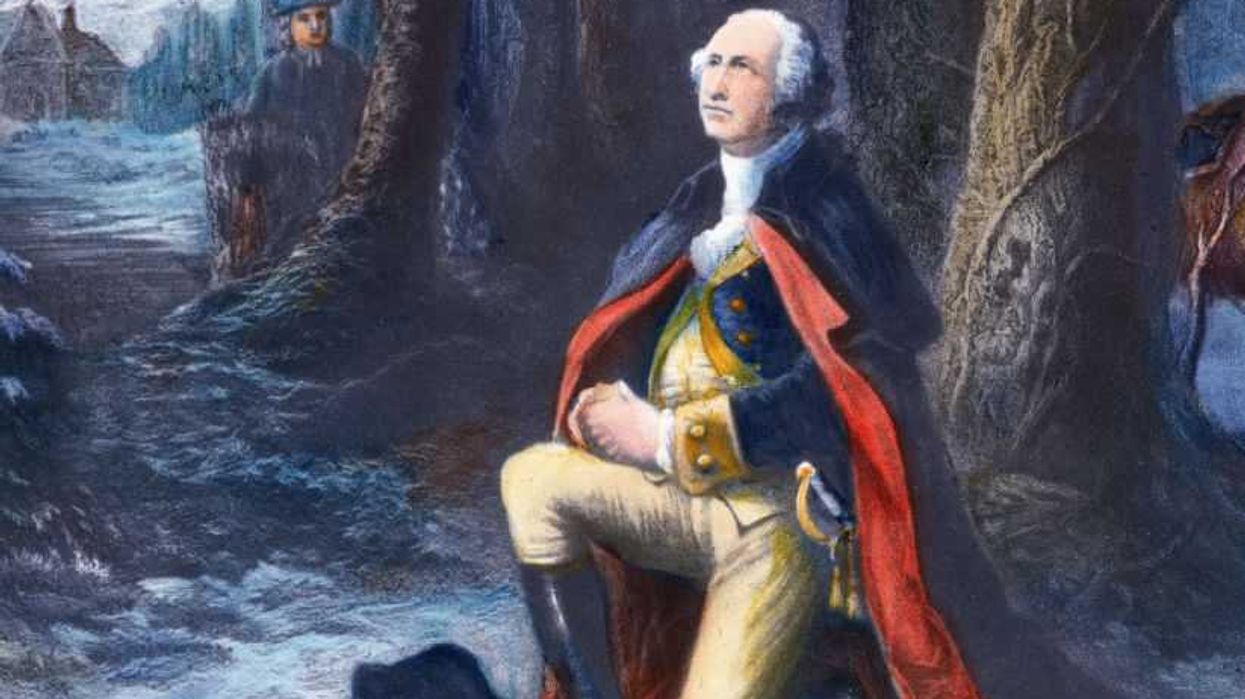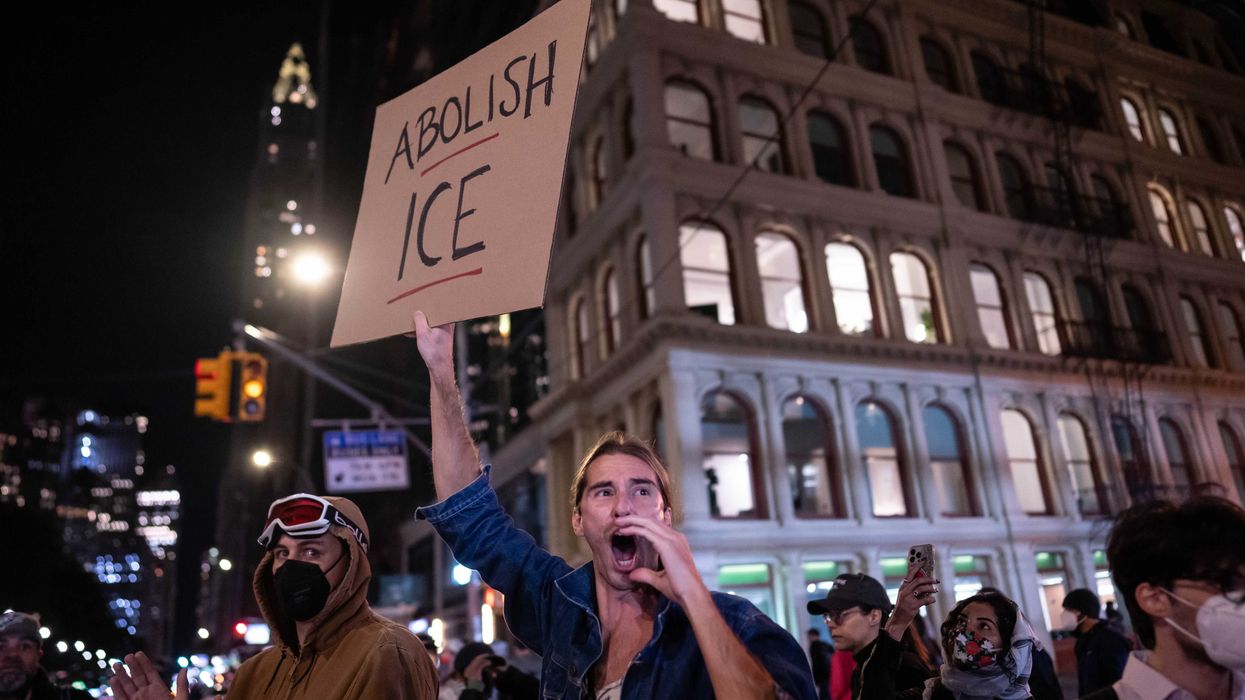Do you have the nagging sense that our empire is in decline?
If so, don't be embarrassed by it. Historically speaking, we're in very good company. Far larger and longer-lived empires than ours have come and gone over the millennia.
This was hit home for me on a recent trip. I scored a major "dad win" by taking my youngest daughter, Grace, to England for her 18th birthday (we live in Massachusetts, USA).
All on her own, Grace developed an abiding love of mythology at a very young age: Greek, Roman, Norse, Native American, Aztec…you name it. She's read the Iliad four times, a different version each time, as each has the biases of the translator subtly woven throughout.
Naturally, her dream mini-vacation involved going to the British Museum where the Rosetta stone lies, along with Viking horde treasures and every possible Roman, Greek and Egyptian artifact one could hope to see.
The British empire came of age at the perfect time to muscle in and “retrieve" the cultural treasures of many different countries. Such are the spoils of empire.
Who knows, perhaps one day we'll see sliced off segments of the Palace of Westminster on display in Cairo's main square. History ebbs and it flows. Back and forth. Victors and losers swapping places over and over again.
If the British Museum reveals anything it's just that. The long sweep of human history shows us that the more things change, the more things stay the same.
The treasures on display at the British Museum also show us that every race and culture has revered beauty. The most intricate and delicate and objectively beautiful jewelry and adornments were worn by kings and queens, priestesses, nobles, and warlords alike.
Sutton Hoo
Consider the find of the Sutton Hoo burial mound. An eminently important and revered individual (possibly Raedwald) was buried sometime around the year 740, with an enormous ship 89 feet in length serving as his burial chamber.
Just imagine how many people it took to dig a hole in the ground that held the ship to its gunnels, and then bring forward enough earth to cover the whole affair in a gigantic mound of earth more than ten feet high in the middle. As a gardener, I can tell you that dirt is heavy stuff that really resists being moved by hand. Hundreds of people must have labored for a very long time to create this burial mound.
Whoever this person was, he was revered enough to be buried with an astonishing collection of wealth. And, perhaps more amazingly, none of it was looted.
Here's the sword belt, made of an intricate lattice of pure gold and polished garnet:
Isn't that a beautiful work of art?
Again, nobody came back and looted this afterwards. Maybe they killed the workers who built the gravesite, but surely folks still knew a very rich ruler had been buried in the area. And yet nobody looted the site. To me, it's hard not see that as a sign of how much the man buried there was respected by his kinsmen.
Here's a close up of the dragons head from that sword belt:
If you've ever worked with garnet, you know just how devilishly hard it is (a 7.5 on a scale of 10) and how much work it must have taken to polish up even one of those tiny panels, let alone all of them, and into such careful shapes.
Similarly, these shoulder clasps meant to secure an article of clothing (like a cape or cloak) are also magnificent:
Again, the detail and workmanship are impressive. But what struck me most was how these works of art are so … beautiful. And from a time of early medieval history referred to 'the dark ages' and popularly described as a period of bleak survival.
If they were, somebody still had the resources to churn out works of extraordinary precision and beauty. That much is clear.
The rest of the artifacts are similarly extraordinary -- especially the helmet, shields, and coinage. Just take a look at this purse lid:
Taken together, I see a culture where reverence mattered. Sutton Hoo's buried leader was revered enough that his tomb was not looted afterwards, promptly or otherwise. The items buried display a reverence for his authority as well as for beauty.
These burial artifacts were by no means trivial items. Each one could have supported a family for many generations at a time when resources were scarce, only obtainable through the hard labor of many.
And yet they were left untouched. Who among today's leaders would be honored enough as a leader that their tomb would not be looted for massive personal gain? Where can you see that our culture reveres beauty to the same degree, being willing to place so much collective effort into its creation?
The Taranto Scepter
Everywhere else in the British Museum were similar displays of honoring the feminine -- the women and the goddesses of the world. Many of the Egyptian displays caught my eye, as did the Greek, but one piece stood out so much that I came back to it three times, so amazed was I by the beauty of it and the message I took from it.
It came from “The Tomb of the Taranto Priestess" and dated from 350 – 340 BC. Since kings did not rule Taranto during that period, it is believed to have been the property of a priestess.
First, her scepter is truly extraordinary:
The entire scepter is perhaps 18 inches in length and capped in extraordinary gold adornment. But what really caught my eye is the gold mesh you see running down the shaft (lost to history, thought to have been bone?). It consists of extremely fine gold wire wrapped in even finer gold wire, and is woven into a meshwork of little diamond shapes with tiny circles at their corners. Each of these circles contained a tiny gem or enameled treasure of some sort (most, again, lost to history).
Here's a close up:
The gold wire used is finer than hair. This scepter speaks of power and delicacy in equal balance, one reinforcing the other. Only the lightest of touch could hold the scepter without breaking strands of gold that fine. That made me think of the woman who wielded it with such a delicate touch.
Again, this person was revered to such an extent that an object of such immense value and beauty was entombed with her, and not robbed at a later time by someone who knew what the tomb contained.
Power, honor, reverence, and beauty. All attributes that show up again and again all throughout history.
The entire British Museum is packed to the rafters with such expressions. I came away both elated to have gotten back in touch with these better expressions of humanity, but also saddened because I can't locate their equivalent in today's world.
One missing element from today? Reverence for the goddess, for the feminine. I cannot think of a single western homage paid to the feminine. No temples to the goddesses and no elevation of feminine attributes.
This is important to note, not because we wish to bash the masculine, but because anything out of balance requires rebalancing. In fact, re-elevating the feminine will actually bring honor and meaning back to the masculine.
Our world is caught up entirely in money, and power, and wars, and force. We revere power over rather than power within.
So the questions I'd like to leave you with are these.
- Where do you have beauty in your life? Do you consciously manifest it?
- What do you revere?
- How honorable are you?
- Do you instill a sense of loyalty in those around you? Who would rob your grave and how quickly after you passed?
- Who do you honor, and how? Also, why?
- How important is it for you to be surrounded by people you can trust, and whose opinions you trust?
- Where and how do you respect, honor and encourage the feminine in yourself (whether you are male or female), in others, and especially in nature?
Finally, are you ready for the massive changes that are coming?
Our Empire Of Debt
The British museum is a testament to the fact that empires have been rising and falling for thousands of years. The common elements of every empire include its own appreciation for works of extreme beauty and human craftsmanship, along with strict hierarchy. They all expressed a strong connection to the divine, however they felt it, each with their own mythologies and attendant religions to make sense of it all…and help cement the rulers place(s) at the top, of course.
Each empire had a mythology by which it self-organized and people bought into that belief system. Looking back they seem like such obvious mental traps it's easy to scoff and wonder how people could have been so blinkered.
Here's the thing about hierarchical societies in every era…in every single one there were always a very few haves and a whole lot of have nots. How were the masses kept in line? Why did the vast bulk of humanity in every empire live in relative poverty and misery, never lifting a finger in revolt except under very rare circumstances?
The connection to yourself is this; each society has a set of reasons in place that explain to the people on the lower levels why they belong there. In some prior cultures the explanation was that authority was invested the royal blood line. You either had it or you didn't.
In other societies, the rulers were said to be closer to the gods, if not descended directly from them. To go against the rulers meant you were assaulting or dishonoring the very gods you prayed to and on which you utterly depended.
While the mythologies in place “explaining" the hierarchy differed, the results did not. They always resulted in a few at the top and an expanding pyramid of population and entitlement laid out below them.
The middle management in this story, those that had relative advantage were the necessary keepers of the systems in each culture and each system. They had more to lose than to gain through revolt and so they stayed true to the system through their entire lives.
The people on the very bottom, despite having a vast numerical advantage, had the limiting belief that they had no power. So revolts almost never happened. Systems of hierarchy persisted until the empire had run its course, almost always failing because it ran out of resources to maintain itself and its growing complexity.
The lessons of history are absolute; nothing lasts. Everything changes, especially who's in charge.
So what are our explanations today that keep us all in line? What keeps us from revolt? To what do we bow our daily collective heads in fealty to?
The answer is Money.
What we call “money" today was a wicked genius invention that popped up right around the same moment in history when humans were working out other keen, life-altering inventions such as clocks, and printing presses.
“None are so hopelessly enslaved as those who falsely believe they are free."
~ Goethe
A person in debt is a person controlled. But they think it was their own decision. Hence the Goethe quote above. A nation in debt is a nation controlled. The debt trap is especially insidious, and it relies on the illusion of free will combined with the full weight of 'the law.'
By attaching a stated rate of interest to a loan, a person's future output was yours if you were the holder of that note. What a stroke of pure (evil) genius! Set the rate high enough and the term long enough and you can get all of your money paid back plus another 100% of that amount or more, every bit of which was actually the future productive output (i.e. time) of the borrower.
Conjure up a promissory note out of thin air and then you get to skim the true productive output of that person, regardless of outcome. Whether they succeeded or failed in the endeavor, you still won. If they paid you back, the win was obvious. If they failed you often had collateral on the back end protecting your “investment." No matter what, you won.
And even if that wasn't the case? Well, you lost the amount of effort on your end that it took to draft up the note. In other words, nothing really.
I've yet to find this laid out in any museum even though the introduction of debt-based money was arguably the most course-altering invention of the past thousand years. It transformed millions of human slaves kept in check by threat of power and physical coercion (if not death) into billions of humans perfectly willing to hand over their labor to a very few elites at the top who did little to no work themselves.
Before this transformative invention money was always a very concrete thing – you either had a stash of silver or gold or you didn't. Afterwards money became abstract. You could loan someone something you never had, written on a slip of paper, and the belief invested in that idea was sufficient to enslave that person until that debt was repaid. “Your" money might never be seen or handled by you at all, which is true for most people today. It exists as digits on a statement or computer screen. Yours, but utterly intangible. A powerful force, never actually seen or handled. In other words, a shared idea. A mythology imbued with tremendous power by a culture that served to enforce the current system of hierarchy.
There is a vast empire now spanning the globe but the mystery of it all is that it's not based on or in any one country. It is an empire of debt. Those issuing the debt are harvesting the output of entire nations, no different in final effect than the Romans enforcing the practice of tithing from extant countries in AD 100.
We now live in a world of, by and for bankers, and other financial elites. Where once it was your royal lineage, or direct connection to the sun god Ra that assured your place at the top, today it's your proximity to the temples of money.
But what happens when the economic pie is no longer expanding, yet the keepers of the system seem unable to turn off their own desires to grab more, more and yet more from that same pie?
That is where we find ourselves today. The economic oxygen is being sucked from the middle and lower classes and the social and political pressures are building.
Meanwhile more and more claims (currency and debts) are being piled on top of this stagnant economic pie thereby increasing the pressure on a creaking system. Someday that all gives way rather spectacularly and ends very badly. History says it ends with a lot of social anarchy and quite possibly another world war.
In Part 2: What History Tells Us Will Come Next, we provide a detailed analysis of how late-stage empires always collapse as the elites exhaust the resources of the masses. We are seeing clear signs of that today.
As we progress from here, the disparity between the haves and have-nots is only going to intensify, with debt (and our debt-based money system) being used as the primary weapon for controlling an increasingly dispossessed public.
Are you prepared?
Click here to read Part 2 of this report (free executive summary, enrollment required for full access)







 AASHISH KIPHAYET / Contributor | Getty Images
AASHISH KIPHAYET / Contributor | Getty Images
 Harold M. Lambert / Contributor | Getty Images
Harold M. Lambert / Contributor | Getty Images Adam Gray / Stringer | Getty Images
Adam Gray / Stringer | Getty Images Anadolu / Contributor | Getty Images
Anadolu / Contributor | Getty Images